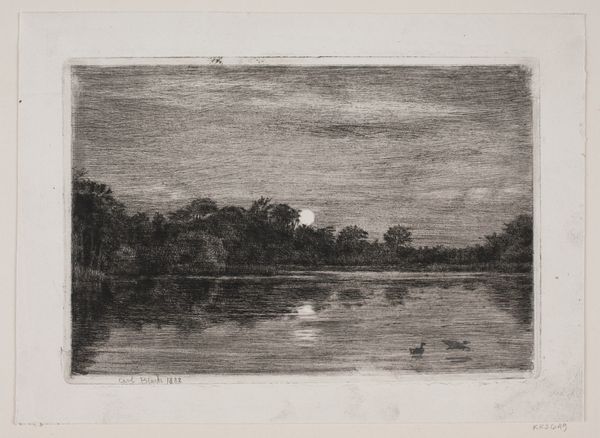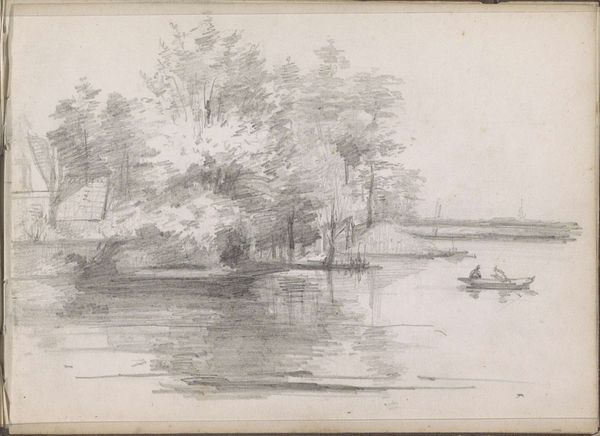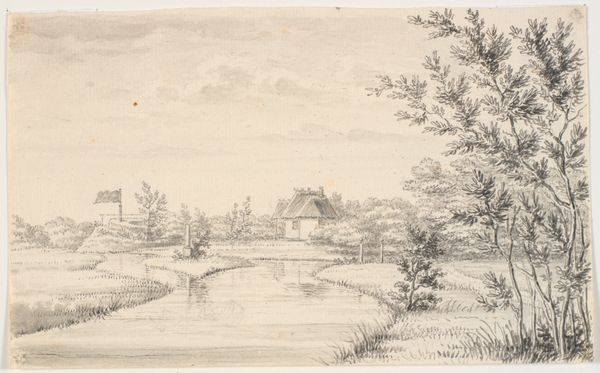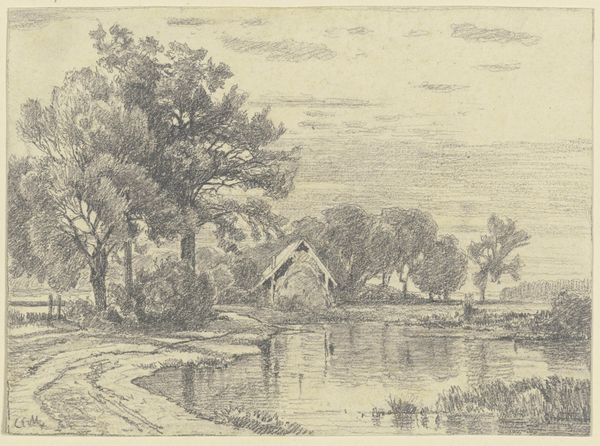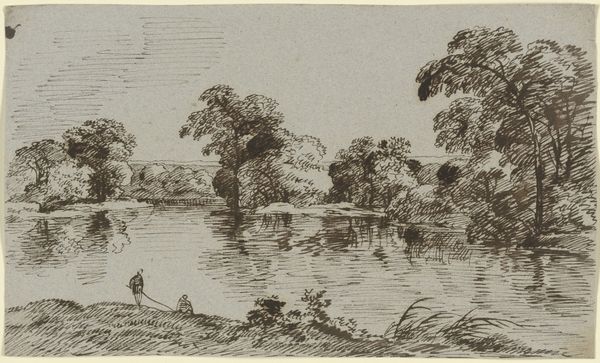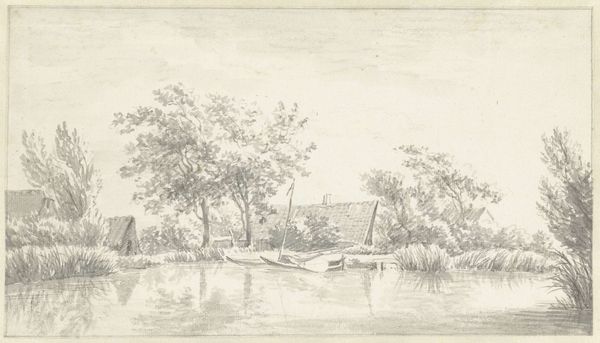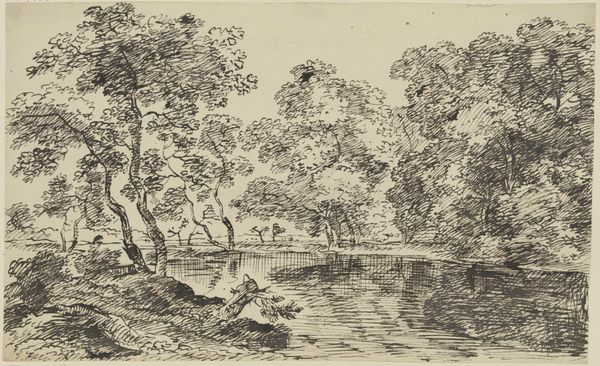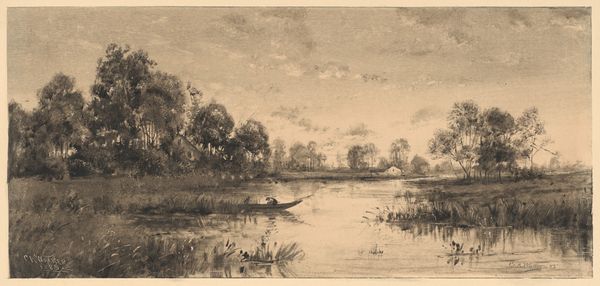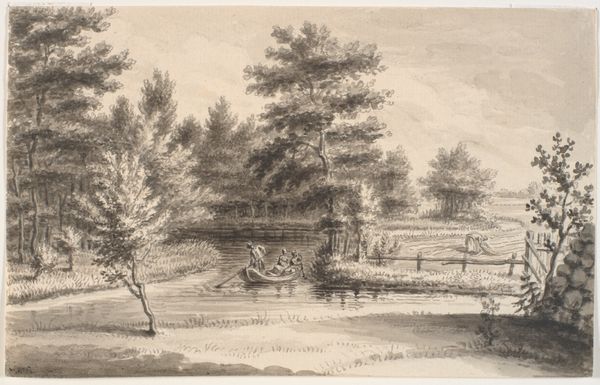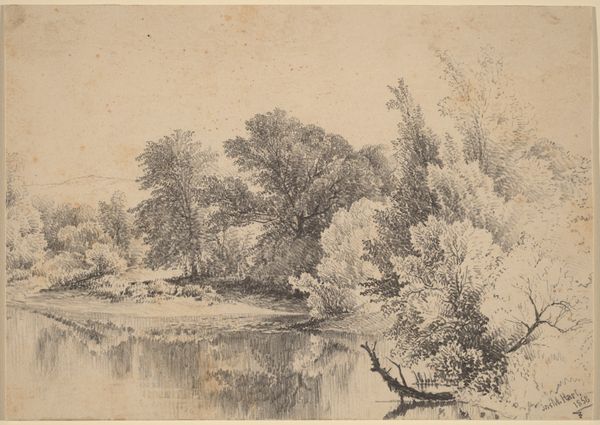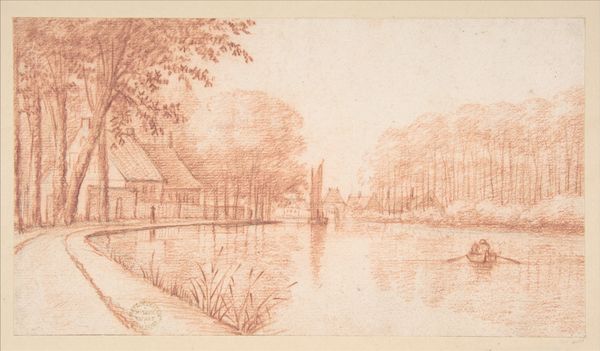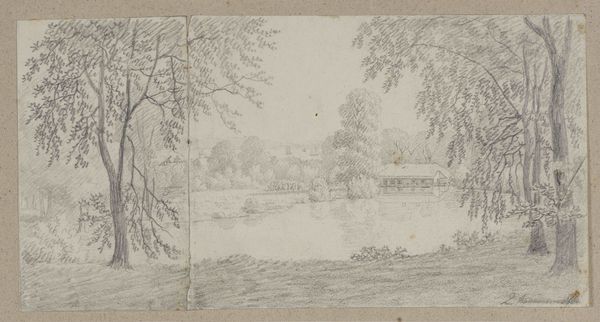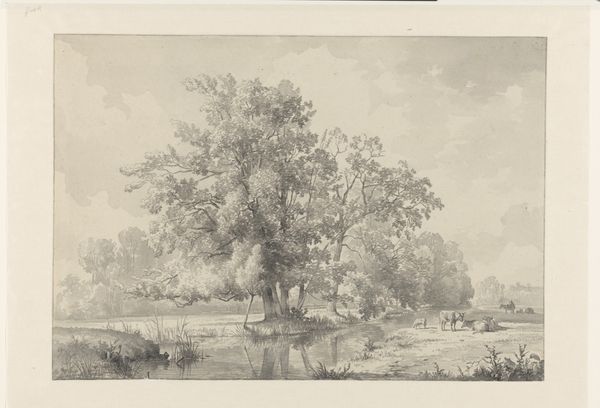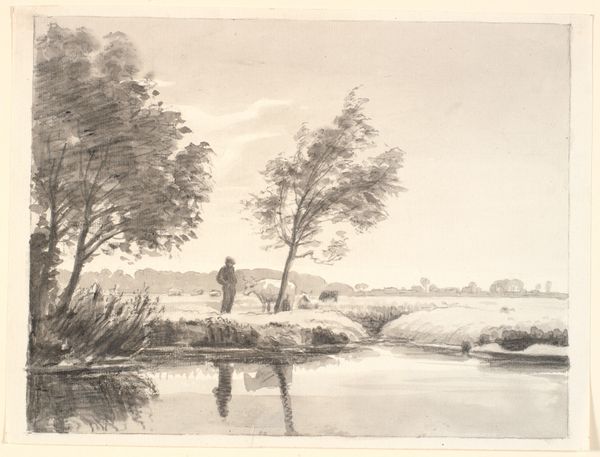
drawing, pencil, graphite
#
drawing
#
pencil sketch
#
landscape
#
etching
#
romanticism
#
pencil
#
graphite
Dimensions: 104 mm (height) x 169 mm (width) (bladmaal)
Editor: This is J.F. Clemens’ "Sanderumgaards have XI," created in 1803. It's a drawing, seemingly done in pencil and graphite. It feels very calm, almost serene, with the water and the distant monument. What stands out to you from a compositional perspective? Curator: Note the careful arrangement of light and shadow which define form and space. The artist establishes depth not through atmospheric perspective alone, but also through the precise delineation of textures and details in the foreground and middle ground. The lines are so finely rendered, they are an integral part of the work, controlling light. Editor: So, the linear aspect is a main point. How does the symmetry—or lack thereof—contribute? I notice the monument is not exactly center. Curator: The slightly off-center placement is crucial, preventing the scene from becoming static. Rather it generates a gentle dynamism. How do the trees interact with the geometricity of the monument? Consider how Clemens uses organic versus nonorganic forms. Editor: The soft, free shapes of the leaves and branches definitely contrast with the rigid obelisk. So the overall structure becomes a conversation between nature and...human intervention? Curator: Precisely. Moreover, it offers the possibility of viewing how humans impose their idealic view of nature upon itself. By simplifying nature's complexities through these various marks on the paper the artists calls us to understand this dynamic. Editor: I never thought about landscape drawing in that way, about our impulse to modify nature or represent it by breaking it down formally into shapes and strokes. I'll look at these kinds of pieces in a new way now. Curator: Indeed. Hopefully you and our audience appreciate this conversation that stems from form.
Comments
No comments
Be the first to comment and join the conversation on the ultimate creative platform.
